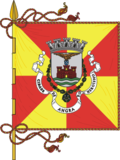Angra do Heroísmo
| Angra do Heroísmo | |||
| Concelho da Angra do Heroísmo | |||
| Municipality | |||
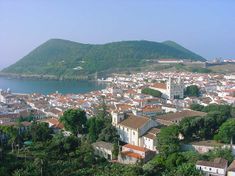 Historic city center of Angra do Heroísmo looking towards Monte Brasil
|
|||
|
|||
| Name origin: Portuguese, for "Cove of Heroism" | |||
| Country | |||
|---|---|---|---|
| Autonomous Region | |||
| Group | Central | ||
| Island | Terceira | ||
| Civil Parishes | Altares,, Cinco Ribeiras, Doze Ribeiras, Feteira, Nossa Senhora da Conceição, Porto Judeu, Posto Santo, Raminho, Ribeirinha, Santa Bárbara, Santa Luzia, São Bartolomeu de Regatos, São Bento, São Mateus da Calheta, São Pedro, Sé, Serreta, Terra Chã, Vila de São Sebastião | ||
| Center | Sé | ||
| - coordinates | |||
| Highest point | Santa Bárbara | ||
| - elevation | 1,023 m (3,356 ft) | ||
| - coordinates | |||
| Lowest point | Sea Level | ||
| - location | Atlantic Ocean | ||
| - elevation | 0 m (0 ft) | ||
| Area | 239 km² (92 sq mi) | ||
| Population | 35,103 (2001) | ||
| Density | 147 / km² (381 / sq mi) | ||
| Municipal Government | Executive & Council | ||
| President/Mayor | Andreia Martins Cardoso da Costa (PS) | ||
| - Council Chair | Ricardo Manuel Rodrigues de Barros | ||
| Timezone | Azores (UTC-1) | ||
| - summer (DST) | Azores (UTC0) | ||
| Código Postal & Codex | 9701-101 Angra do Heroísmo | ||
| Country Code & Fix Line | +351 292 | ||
| Denonym | Terceirenses; Angrenses | ||
| Patron Saint | São João | ||
| Municipal Holiday | June 24 | ||
| Municipal Offices | Praça Velha | ||
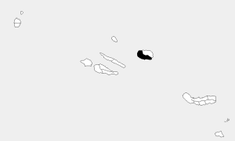 Location of the municipality of Angra do Heroísmo in the archipelago of the Azores
|
|||
| Website: http://www.cm-ah.pt | |||
Angra do Heroísmo (Portuguese pronunciation: [ˈɐ̃ɡɾɐ du eɾuˈiʒmu]), locally referred to as Angra, is a municipality and city (of approximately 21,300 people) on the island of Terceira, within the Portuguese autonomous region of the Azores. The municipal area has a population of 35,581 and an area of 239.0 km2 (92.3 sq mi). Along with Praia da Vitória to the north, it is one of two municipal administrative divisions that comprise Terceira. Together with Ponta Delgada (São Miguel) and Horta (Faial), Angra is one of the three regional capitals of the Azores. Each capital is responsible for one of the three branches of government; Angra is the location of the judicial branch (the Supreme Court of the Azores), in addition to being the religious centre of the Archdiocese of Azores.
Angra do Heroísmo is the historical capital of the Azores; it is also the archipelago's oldest city, dating back to 1450, classified as a World Heritage site by UNESCO in 1983. Some claim that Angra was founded by Álvaro Martins, who sailed with Didrik Pining on his expedition to the New World, and with Bartolomeu Dias on his voyage around the Cape of Good Hope. Others contend that Angra was founded in 1450 or 1451 by Jácome de Bruges, a Fleming in the service of Prince Henry the Navigator, who recruited farmers, fishermen, and merchants in the Low Countries to colonize the Azores.
Angra served as a place of exile for Almeida Garrett during the Napoleonic Wars. It also served as a refuge for Queen Maria II of Portugal from 1830 to 1833.
The word Heroísmo ("heroism") was added to the name of the city, Angra (meaning "inlet" or "cove"), by Maria II, in recognition of the bravery and sacrifice shown by the people of Angra in the struggle that ended with the formation of a liberal constitutional monarchy in Portugal.
General information
Angra occupies the south coast of Terceira. It is the headquarters of a military command and the seat of a Roman Catholic bishopric. Its principal buildings are the cathedral, a military college, an arsenal, and an observatory. The harbor, now of little commercial or strategic importance (but formerly a major commercial and military port), is sheltered on the west and southwest by the promontory of Monte Brasil, but, today, it is less important than the neighboring ports of Ponta Delgada on the island of São Miguel and Horta on the island of Faial. There isn't much in the way of international trade; what little trade there is, consists chiefly of exports of beef, dairy products, and fish.
History
The founding of Angra
The site chosen by the first settlers was a ridgeline, which opened, like an amphitheatre, onto two small bays, separated by a peninsula, at the head of which stood the extinct volcano of Monte Brasil. One of the bays, the "cove" (angra), was deep enough (an average of forty metres deep) to provide an anchorage for large vessels, and it had the further advantage of being sheltered from most strong winds, except for those from the south and southest.
The first houses of Angra were built on the hillside above the cove, the steep streets winding down to the shore. On high ground, away from the sea, a castle-stronghold-fortress was begun; it was eventually named Castelo dos Moinhos (Castle of the Mills).
In 1474, Álvaro Martins Homem ordered that the river flowing into the cove be diverted into a manmade stone-lined channel, running straight downhill, so that its rushing waters could be harnessed to turn the waterwheel of a mill. (This accounts for the odd name for the castle.) This laid the foundation for the future economic development of the village of Angra. At the same time, this allowed the area on either side of the river's course to be rearranged according to a rectilinear street-plan and organized into neighborhoods by function (commercial, residential, etc.), to accommodate the needs of the fast-growing port. So, in 1534, Angra was the first town in the archipelago to be elevated to the status of city. In the same year, it was chosen by Pope Paul III to be the seat of the Diocese of Angra, with ecclesiastical authority over all of the islands of the Azores.
Angra's role in trade with the "Indies"
The commercial port of early Angra (now moved to Praia da Vitoria, to make room for the pleasure craft and marinas of modern Angra) played an important role in the Portuguese East Indies trade beginning in the fifteenth century. The bay of Angra was often full of caravels and galleons, a circumstance that contributed mightily to the progress of the city and its people. Evidence lies in the palaces, convents, churches, and forts of Angra, infrastructure usually inappropriate to such a small city, on such a small island, in the middle of such a large ocean.
Pero Anes do Canto (1480–1556) was a Portuguese nobleman, who was born at Guimarães, Portugal and died at Angra do Heroísmo. He was the superintendent of fortifications on Terceira, and, for his competency in that role and other services to the Portuguese crown, he was rewarded with the title, moço fidalgo (knight-gentleman) of the royal house, and the high office of "Purveyor to the Armada of the Islands and the merchant vessels of the East India trade in all of the islands of the Azores", a title that devolved upon successive members of the Canto family for about three hundred years.
The importance and power of the Cantos can hardly be overstated. During the period when Portugal was trading with its Asian, African, and South American colonies, they were responsible for the protection and welfare of the merchant fleet (and the staggering wealth represented by the cargoes in their holds) once the ships approached the last leg of their voyages in the North Atlantic. They were also responsible for acting as the chief customs official, the chief magistrate charged with resolving disputes, and the overseer of the naval defenses of the Azores.
António, Prior of Crato, and the Portuguese succession
Before Philip II of Spain had a chance to enforce his claim as heir to the crown of Portugal in 1580, António, Prior of Crato, an illegitimate scion of the deposed Portuguese royal family, on 24 July 1580, proclaimed himself King of Portugal. However, his rule lasted only twenty days. On 25 August, he was defeated at the Battle of Alcântara by the Spanish Habsburg armies led by Fernando Álvarez de Toledo, Duke of Alba.
After Alcântara, he attempted to rule Portugal from Angra in the Azores, where he established an opposition government that lasted until 1583, and where he even minted coins, a typical act of sovereignty. Because of this, many historians consider him to be the last monarch of the House of Aviz (instead of the cardinal-king, Henry,) and the eighteenth King of Portugal. Nonetheless, his government on Terceira was only recognized in the Azores.
From this place of refuge, Don António conducted a popular resistance movement opposed to the recognition of a foreign king. He was supported by a number of French adventurers under Filippo di Piero Strozzi, a Florentine exile in the service of France, as well as Portuguese patriots, some of whom came to the Azores to assist him directly.
- The Battle of Salga Bay
The first military action in the Azores occurred about a year after António's crushing defeat at Alcântara. A Spanish fleet of ten warships, commanded by Don Pedro Valdez, bombarded Angra on 5 July 1581, then began investigating the coast of the island in search of the best landing places. At dawn on 25 July, the first ships loaded with Spanish troops anchored in Salga Bay, about twelve kilometres east of Angra's harbor in the village of Vila de São Sebastião. A coastwatcher, stationed at the cape called Ponta do Coelho, gave the alarm, but when the first Portuguese forces arrived about one thousand Castilians had already landed and had started to sack the surrounding villages. In this phase of the fighting, according to local accounts of the action, a leading role was played by young and pretty Brianda Pereira who, together with other women, attacked the enemy with farm implements when she saw her house destroyed.
By midmorning, the Spaniards were sweeping the coast with their artillery, and the fighting was fierce. About midday, when the outcome of the battle was still unsettled, an Augustinian monk named Friar Pedro, who was taking an active part in the struggle, thought of the stratagem of driving cattle against the Spaniards so as to scatter them. Over a thousand head of cattle were quickly gathered and, by means of shouts and musket shots, driven against the enemy positions. The disconcerted Spaniards fell back and were pursued to the shore, where almost all of them lost their lives in the fighting or drowned while trying to reach their boats. This unconventional victory, the Battle of Salga Bay, proved that António, the pretender to the Portuguese throne, could count on a good deal of local support.
- The Battle of Ponta Delgada
The next major military action in the Azores didn't take place until the following summer. Álvaro de Bazán, 1st Marquis of Santa Cruz was a sixteenth-century Spanish admiral. When the succession crisis erupted, Santa Cruz held a naval command, and, in 1582, Santa Cruz was sent, as "Admiral of the Ocean", to drive away the pretender and his supporters at Angra. Badly outnumbered, he won the Battle of Ponta Delgada on 26 July 1582, off São Miguel Island, against a loose confederation of Portuguese, French, English, and Dutch privateers.
- The Battle of Terceira
The fleet of António was not only utterly defeated on this day, but he fled to exile in France, and his supporters were also defeated the following year at what is usually called the Battle of Terceira, near Angra, on 27 July 1583. This decided the struggle for the Azores (and for Portugal) in favor of the Spanish Habsburgs.
The "birth" of the Spanish Armada
Santa Cruz, the Spanish admiral who defeated the House of Aviz and its partisans in the Azores, recognized that England presented a grave threat to Spain's empire, and he became a zealous advocate of war. A letter he wrote to Philip II from Angra do Heroísmo, on 9 August 1583, two weeks after the Battle of Terceira, contains the first definite suggestion of the formation of the Spanish Armada.
A popular place of exile
Over the years, Terceira (and Angra in particular) has been a popular place for out-of-favor monarchs to cool their heels while events on the Portuguese mainland or elsewhere went on without them. In 1667, near the end of the Portuguese Restoration War, King Afonso VI, his chief advisor, Castelo Melhor, and Castelo Melhor's francophile party were overthrown by the king's younger brother, Pedro, Duke of Beja, (who later ruled as Pedro II of Portugal.) Pedro first installed himself as his brother's regent; then, he arranged Afonso's exile to the island of Terceira in the Azores on the pretense that he was incapable of governing. Afonso's exile lasted seven years.
A self-imposed exile
João Baptista da Silva Leitão de Almeida Garrett, better known as the author, Almeida Garrett, was born in 1799 in Porto, Portugal. In 1809, his family fled the second French invasion carried out by Soult's troops, seeking refuge in Angra do Heroísmo. While in the Azores, he was taught by his uncles, all prominent churchmen. (His uncle, Dom Frei Alexandre da Sagrada Família, was the twenty-fifth bishop of Angra.) In 1818, Almeida Garrett left the island and moved to Coimbra to study at the university's law school.
How Angra became Angra do Heroísmo
When King João VI died in 1826, the country was plunged into a succession crisis. The king had a male heir, Pedro, but Pedro had proclaimed the independence of Brazil in 1822, and he was now Emperor Pedro I of Brazil. No one in Portugal wished to revisit the short period (1808–1820) when Portugal and Brazil were ruled under a dual monarchy, so, even though Pedro was clearly the rightful heir, the possibility of Pedro returning as the new King of Portugal was problematic. The late king also had a younger son, Miguel, but he was exiled in Austria after leading a number of revolutions against his father and his liberal régime.
In an attempt at a Solomonic solution, Pedro abdicated the Portuguese throne in favor of his seven-year-old daughter, Maria da Gloria, and he stipulated that, when she came of age, she should marry her uncle, Miguel. Pedro further stipulated that Miguel, if he wanted a share of the throne under this plan, should swear an oath of allegiance to his father's liberal constitution. Miguel agreed, but he quickly reneged on his agreement. He returned from exile in Austria, deposed his young niece, and proceeded to establish the absolutist form of monarchy that his father and brother abhorred.
A war broke out between the liberals (Pedro and Maria da Gloria) and the absolutists (Miguel's faction). This period became known as the Liberal Wars, but it was equally known as the Portuguese Civil War, the War of the Two Brothers, or the Miguelite War, and it lasted from 1828 to 1834. During this time of strife, the loyalists adopted Terceira, and Angra in particular, as their base for launching attacks against Miguel's forces. On 22 June 1828, forces loyal to the liberals deposed the captain-general of the Azores, Manuel Vieira de Albuquerque Touvar, deported him to the mainland, and established their headquarters at Angra.
One of the first major engagements of the war was the Battle of Praia Bay, fought on 28 August 1828, off the coast of Terceira, between Portuguese loyalists and a Miguelite fleet trying to crush Maria da Gloria's insurrection in its infancy. The loyalists were victorious.
In the nineteenth century, as mentioned above, the word Heroísmo (heroism) was added to Angra's name in recognition of its contribution to the liberal cause during the Portuguese Civil War (1828–1834). It was a victorious Maria da Gloria, who, reigning as Maria II of Portugal, bestowed this honor on Angra, her Azorean home during the six long years of civil war. In effect, "Angra do Heroísmo" means "Angra, City of Heroes".
A visit from Charles Darwin
On 20 September 1836, Charles Darwin, the eminent English naturalist, nearing the end of his second voyage aboard the research vessel, HMS Beagle, arrived at the Azores and anchored at Angra. The next day, Darwin hired a horse and some guides and rode to the center of the island where an active volcanic crater was supposed to exist. What he found there was not a "crater" at all; instead, what he found was a series of fissures in the rock with steam issuing from them. To a naturalist, his long day in the saddle was not very illuminating. Biologically speaking, Darwin wrote, he could "find nothing of interest." The next day, Darwin traveled along the coast road and visited the town of Praia da Vitoria on the northeastern end of the island. He returned by way of the northern shore, and he crossed the central part of the island on his way back to the Beagle. He departed on 25 September for the island of São Miguel, to pick up any letters that may have been posted to him there.
Angra and the American Civil War
Angra and neighboring Praia da Vitoria were the sites of an interesting episode of the American Civil War. Unable to break the blockade by US Navy ships of southern (Confederate) ports, and hoping to draw these blockading ships away to counter other perceived threats, the Confederate States of America had commerce raiders built in Britain and France. One of these left Liverpool in July 1862 in the guise of a “merchant ship” and rendezvoused with supporting ships in the harbor of Praia da Vitoria. This meeting-place was chosen because Portugal was neutral and the Azores were far away from pursuing US Navy ships. In that port and, later at Angra, cannon and other supplies of war were transferred aboard the new ship. The CSS Alabama was commissioned on 24 August 1862 just outside the harbor of Angra, and it left Terceira to begin its career as the most effective commerce raider in naval history.
The Ngungunhane captivity
Ngungunhane (also known as Mdungazwe Ngungunyane Nxumalo, N'gungunhana, or Gungunhana Reinaldo Frederico Gungunhana) was born in Gaza in southern Africa around 1850, and he died at Angra do Heroísmo on 23 December 1906. A vassal of the Portuguese king, he later rebelled, and he was defeated and imprisoned by the Portuguese Army, led by Joaquim Mouzinho de Albuquerque. He was exiled to Lisbon and then to the island of Terceira, where he converted to Catholicism; he lived there until his death. He was the last emperor of the Empire of Gaza, a territory that is now part of Mozambique, and he was the last monarch of his dynasty.
Nicknamed the "Lion of Gaza", he reigned from 1884 to 28 December 1895, the day he was made prisoner by Joaquim Mouzinho de Albuquerque in the fortified village of Chaimite. Because he was already known to the European press, the Portuguese colonial administration decided to condemn him to exile rather than send him to face a firing squad, as would normally be the case. He was transported to Lisbon, accompanied by a son named Godide and other dignitaries. After a brief stay, he was transferred to Angra do Heroísmo, where he died eleven years later.
The 1980 earthquake
Angra was hit by a major earthquake on 1 January 1980 that did considerable damage to the city's historic center and to many other locations on the island of Terceira. The Azores have experienced many earthquakes and volcanic eruptions since prehistoric times, but the 1980 event was probably the most serious since the eighteenth century. The damage in the city was repaired and rebuilt within four years. In 1983, the historic center of Angra do Heroísmo was named a UNESCO World Heritage Site.
Parishes
"Parishes" in Portugal have both a religious and a civil significance. In a civil context, a parish (freguesia in Portuguese) is simply a subdivision of a municipality (concelho or município). The nineteen civil parishes of Angra do Heroísmo are:
|
|
|
Thirteen of the parishes have a thousand people or more, and 88.71% of the population live in these larger parishes. About 11.3% of the population live in the remaining six small parishes. The most populated parish is Nossa Senhora da Conceição (Our Lady of Conception), and the least populated is Serreta. The largest parish geographically is Porto Judeu, and the smallest is Santa Luzia.
Points of touristic interest
The Old Square
One can not describe Angra do Heroísmo without mentioning the "Old Square", also known as the Square of Sts. Cosmo and Damian or Restoration Square. It was the first Portuguese square specifically designed as a broad open area at the intersection of two main arteries. Typically, squares in medieval Europe developed in a rather haphazard and unplanned fashion, around the nucleus of the local church or cathedral, with open space only at the west front of the church, and a maze of crooked streets, often eight or ten of them, entering the "square" at various angles. Angra's square, on the other hand, is a broad and orderly expanse, paved with small blocks of stone, white limestone and black basalt, that form a Portuguese mosaic similar to what you will find on the sidewalks and public squares of Lisbon and other cities and towns on the mainland.
The well-planned and handsome square at Angra may, in fact, owe some of its singular character to the 1755 Lisbon earthquake. Even though the Azores were not much damaged by the huge temblor, the tremendous destruction at Lisbon resulted in a sweeping reconstruction program, directed by the prime minister, Sebastião José de Carvalho e Melo, Marquis of Pombal, who, rather than rebuilding the Lisbon that existed prior to the earthquake, rebuilt central Lisbon in a cleaner, more rectilinear, fashion. The Old Square, which reached its ultimate form during the late eighteenth century, reflects this new thinking, this new approach to urbanism, and it is the nucleus from which the main arteries of the urban network of Angra do Heroísmo have extended.
During the nineteenth century, at least from 1879 onward, the Old Square served as the site for concerts by the military band of the Tenth Chasseur regiment, whose barracks was in the Fortress of São João Baptista (St. John the Baptist); for more than half a century, they regularly played music for the citizens of Angra.
Throughout its long history, the Old Square has had various functions: it was a market for chickens and livestock on Sundays, it was the site of hangings during the struggles between the liberals and the absolutists during the Portuguese Civil War, and it is the place where the Angra version of the running of the bulls begins.
Bullfighting, Azores-style
The Portuguese version of bullfighting differs considerably from its Spanish counterpart, and the Azorean variety, which began on Terceira, differs from the mainland style in some important respects also. The Azorean bullfight ritual involves "audience participation" in a way that recalls the "running of the bulls" at Pamplona (Spain).
On Terceira, a fighting bull is enclosed in a wooden crate and transported to the Old Square in Angra, where a long stout rope is secured around his neck. Fireworks are exploded to signal the citizens that a bull will soon be let loose in the public square. Once the bull is released, some young men take hold of the rope to try to control the bull's head, and others taunt the bull with everything from brightly-colored fighting capes to parasols. A free-for-all ensues while the bull drags some men around by the rope and tries to punish his tormenters, by butting them to the ground and goring them (with blunted horns), or by trampling over them. This is a popular leisure activity and public entertainment; it is known as the tourada à corda (bull-on-a-rope 'game').
Eventually, the bull is funneled through the city streets to the bullring, the Praça de Toiros da Ilha (Island Bullring), in the eastern part of Angra, where a traditional Portuguese-style bullfight is held. From May 1 to September 30, there are daily touradas; in fact, sometimes there are two or three in one day.
The fortress and harbor defenses
On Monte Brasil stands the castle originally named São Filipe, because it was built in the reign of Philip II. This formidable fortress encircles Monte Brasil with its four-kilometre-long wall and four hundred pieces of artillery that protected ships returning from the East Indies laden with gold and silver.
The Igreja de São Joao Baptista (Church of St. John the Baptist) stands in the castle's parade ground, built in memory of the end of the Iberian union and the restoration of Portuguese sovereignty in 1640. At that time, the fortress was renamed to correspond with the name of the church.
At the other end of the Baia de Angra (Bay of Angra), opposite the Porto de Pipas (Port of Barrels), is the Castelo de São Sebastião (St. Sebastian Castle), built in the sixteenth century on the order of King Sebastian. The scope of its cannons were interlocked with the ranges of the cannons on Monte Brasil and three other small forts along the coastline, creating an effective defensive system for the port, which had been a favorite target for pirates. The Castelo de São Sebastião has been transformed into a charming hotel, one of the forty-odd pousadas (inns in historic buildings) of Portugal; this transformation preserves its original historic character, but the plumbing has been modernized, and some non-visible structural elements have been strengthened.
Religious buildings
At one stage, Angra had as many as nine convents, each with its own cloisters and churches. Most of these churches are from the mannerist and baroque periods, and they are remarkably grand if we bear in mind the poor quality of the stone to be found on the island. The interior decoration of these churches relied on the use of both traditional carved and gilded woodwork and the rich and exotic woods of Brazil.
On the Ladeira de São Francisco in central Angra is the Igreja da Nossa Senhora da Guia (Church of Our Lady of Guia), where the seafarer Paulo da Gama is buried. He accompanied his brother Vasco da Gama on his first sea voyage to India in 1497.
Palace of the captains-general
Not far away, in the street called Largo Prior do Crato, a sixteenth-century building, the Palacio dos Capitaes Generais (Palace of the Captains-General), is intimately linked to the history of all the Azores. This was originally the Jesuit College before it was abandoned in 1759. When the office of Captain-General was created in 1766, the building was converted into the official residence of the Captains-General, the men who ruled over the military, political, and administrative life of the archipelago.
Palace of the Bettencourts
The Palacio dos Bettencourts (Palace of the Bettencourts) is a beautiful seventeenth-century building, originally a private home, which now houses the public library and the city archives, a repository with more than 400,000 books and two million documents.
Notable buildings
|
|
|
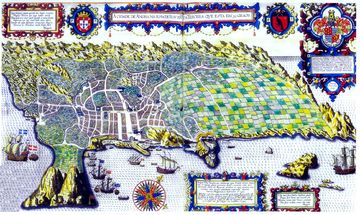
Notable natural landmarks
|
|
|
Higher education
The University of the Azores, which has its principal campus on the island of São Miguel, has a subsidiary campus in Angra do Heroísmo, where the Department of Agrarian Sciences (Departamento de Ciências Agrárias) is located. This institution is a center for advanced scientific and agricultural studies, and it attracts students from the entire archipelago, as well as foreign students from many countries.
The Instituto Histórico da Ilha Terceira (IHIT), which means, in Portuguese, the "Terceira Island Historical Institute", is a private cultural association, dedicated to the investigation and study of the history of the Azores. It is organized as an academy, and it sponsors classes, lectures, and symposia on various topics. The institute was founded in 1942 by the city of Angra do Heroísmo.
| Central Zone of the Town of Angra do Heroismo in the Azores* | |
|---|---|
| UNESCO World Heritage Site | |
| State Party | |
| Type | Cultural |
| Criteria | iv, vi |
| Reference | 206 |
| Region** | Europe and North America |
| Inscription history | |
| Inscription | 1983 (7th Session) |
| * Name as inscribed on World Heritage List. ** Region as classified by UNESCO. |
|
Local football
Angra has a soccer team, named S.C. Angrense, that is part of the Associação de Futebol de Angra do Heroísmo. Sport Clube Lusitânia is the main soccer team on the island. The region's soccer association is located in Angra do Heroísmo.
International relations
Twin towns — Sister cities
Angra's sister cities are:
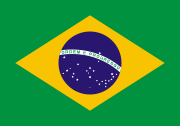 São Salvador da Baía, Brazil (also known as Bahia)
São Salvador da Baía, Brazil (also known as Bahia) Gramado, Rio Grande do Sul, Brazil
Gramado, Rio Grande do Sul, Brazil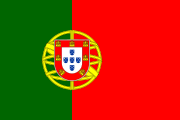 Évora, Portugal
Évora, Portugal Gilroy, California, USA
Gilroy, California, USA Taunton, Massachusetts, USA
Taunton, Massachusetts, USA
See also
- Political status of the Autonomous Region of the Azores
- Political sub-divisions of Portugal
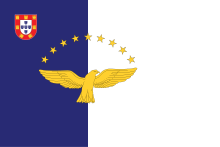
References
 This article incorporates text from a publication now in the public domain: Chisholm, Hugh, ed (1911). Encyclopædia Britannica (Eleventh ed.). Cambridge University Press.
This article incorporates text from a publication now in the public domain: Chisholm, Hugh, ed (1911). Encyclopædia Britannica (Eleventh ed.). Cambridge University Press.
Notes
External links
- Municipality official website
- Photos from Angra do Heroísmo
- (English) The Azores Islands, Site with abundant information about Angra do Heroísmo
|
|||||||||||||||||||||||||||||||
